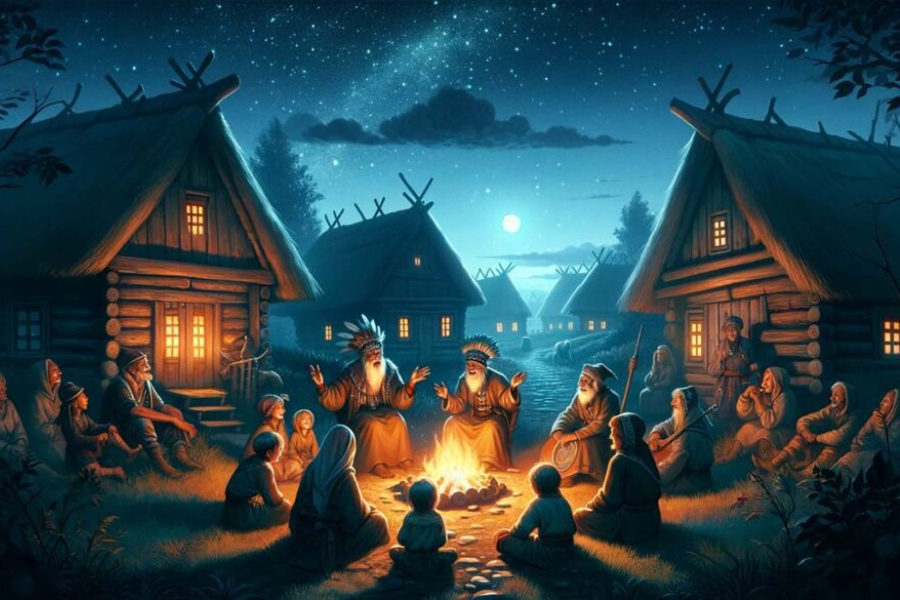“The Power of Mamgatoto: How Culture Connects People and Nature”
Mamgatoto is a concept deeply embedded in various cultures, symbolizing a connection to regional identities and practices. This article delves into the origins of Mamgatoto, its cultural relevance, and the influence it has on contemporary society. Through this exploration, we aim to enhance your understanding of this term and its significance in modern life.
Understanding Mamgatoto
Mamgatoto refers to ideas and actions that signify a cultural or regional connection. While the specific meaning may vary depending on the context, the core essence remains consistent. Over time, Mamgatoto has adapted, reflecting the changing cultural landscape and societal norms. Its origins can be traced back to ceremonies and customs of earlier times, highlighting its resilience and relevance in today’s world.
The evolution of Mamgatoto underscores its importance as it continues to transform and integrate into various cultural trends and practices. By studying its historical roots, we gain insight into why Mamgatoto maintains its significance in contemporary society.
The Cultural Importance of Mamgatoto
Mamgatoto holds a central role in traditional ceremonies, such as weddings, harvest festivals, and rites of passage. These rituals serve multiple purposes: they celebrate significant life events, uphold cultural values, and keep traditions alive for future generations. Passed down through the ages, these practices preserve the essence of cultural heritage, connecting individuals to their roots.
Additionally, folktales often incorporate Mamgatoto, conveying essential beliefs and virtues. These narratives serve as vehicles for teaching history, morals, and cultural continuity. Importantly, Mamgatoto is not a relic of the past; it remains a vibrant aspect of modern culture. People engage in customs and festivals that honor Mamgatoto, blending ancient traditions with contemporary lifestyles.
Mamgatoto’s Impact on Society
Mamgatoto plays a vital role in fostering community ties. The rituals and social gatherings associated with Mamgatoto bring people together, creating a sense of belonging and unity. This social cohesion is crucial for maintaining strong, resilient communities. In an era of globalization, where cultural dilution poses a threat, Mamgatoto acts as a safeguard for cultural identities. Communities that embrace Mamgatoto are better equipped to protect their traditions and ensure their survival in a rapidly changing world.
Influence on Social Norms
The principles underlying Mamgatoto significantly influence societal norms and behaviors. These cultural standards manifest in ethical considerations, social interactions, and community values. For instance, traditional practices rooted in Mamgatoto often promote respect for elders, community involvement, and environmental stewardship. Such principles can shape individuals’ actions and foster a collective sense of responsibility within the community.
Economic Significance of Mamgatoto
In recent years, Mamgatoto has emerged as an attraction for tourists eager to explore unique cultural experiences. This surge in interest has led to the growth of cultural tourism, encompassing festival tours, traditional performances, and local exhibitions. These activities not only boost the local economy but also provide a platform for showcasing cultural heritage.
Local businesses often thrive through the promotion of products, foods, and services linked to Mamgatoto, leading to economic benefits for the community. However, this commercialization comes with challenges. Issues of cultural exploitation and the dilution of authentic practices can arise, necessitating a careful balance between economic gain and the preservation of cultural integrity.
Environmental Perspectives of Mamgatoto
Historically, Mamgatoto has maintained a strong connection to environmental conservation. Traditional practices often emphasize a reverence for nature, incorporating eco-friendly measures and conservation efforts into rituals. These practices reflect a deep understanding of ecological cycles and the interdependence of life.
In contemporary contexts, efforts to integrate Mamgatoto into modern conservation initiatives, such as ecotourism and community-based projects, showcase its relevance in environmental sustainability. By promoting these initiatives, communities can protect both their cultural and natural heritage.
However, Mamgatoto’s sustainability efforts face challenges, including deforestation, habitat loss, and climate change. Addressing these issues requires collaboration that honors traditional knowledge while incorporating modern conservation strategies. This approach not only preserves Mamgatoto but also fosters a greater appreciation for the environment.
Incorporating Mamgatoto in Education
Recognizing the importance of cultural heritage, many educational programs are now integrating Mamgatoto into their curricula. This initiative aims to teach students about their cultural traditions, helping them appreciate the value of Mamgatoto and discover their hidden talents.
Community and school centers also offer extracurricular programs focused on Mamgatoto. These initiatives often include cultural workshops, performances, and events that celebrate traditional practices. By engaging in hands-on activities, children can develop a sense of pride in their heritage, fostering cultural awareness and empathy.
Studying Mamgatoto within educational settings plays a crucial role in bridging cultural gaps and shaping personal identities. This cultural education is essential for nurturing well-rounded individuals who understand and respect diverse traditions.
Mamgatoto and Health and Wellbeing
Mamgatoto encompasses traditional healing practices that continue to be relevant today. These techniques often include herbal remedies, rituals, and community support systems that promote holistic health—addressing mental, physical, and emotional well-being.
Participating in Mamgatoto practices can relieve stress and tension, contributing positively to mental health. Community rituals associated with Mamgatoto foster connections among participants, enhancing feelings of solidarity and support. Recent trends indicate a growing interest in incorporating traditional wisdom into modern wellness practices, underscoring the enduring value of Mamgatoto.
The Future of Mamgatoto
As cultural expressions evolve, Mamgatoto faces unique challenges, including shifting cultural trends, urbanization, and declining youth engagement. To ensure the survival of Mamgatoto for future generations, proactive measures must be taken to address these issues.
Opportunities for Growth
Despite these challenges, opportunities exist to expand the reach and relevance of Mamgatoto. Initiatives such as digitally documenting cultural events and festivals can help preserve and share traditions with wider audiences. Collaborations with universities and educational institutions can also enhance the visibility and accessibility of Mamgatoto.
In this digital age, technology offers valuable tools for revitalizing Mamgatoto. Social media platforms and online resources can facilitate the sharing of stories, traditions, and cultural practices, creating connections between communities around the world. By embracing technology, Mamgatoto can adapt to contemporary modes of communication and engagement.
Summary
Mamgatoto is a multifaceted cultural concept rooted in ancient traditions, symbolizing regional and cultural connections. It has grown to influence modern society in various ways, including community building, economic tourism, environmental conservation, health practices, and education. Mamgatoto’s impact can be seen in ceremonies, folktales, social gatherings, and tourism, all of which support cultural identity and continuity. Despite challenges like cultural dilution and environmental threats, Mamgatoto remains relevant by adapting to new cultural trends, digital platforms, and educational programs. By balancing tradition with modern needs, Mamgatoto continues to foster social cohesion, economic benefits, and environmental sustainability.
FAQs:
1. What is the meaning of Mamgatoto?
Mamgatoto represents any idea or action that signifies a regional or cultural connection. Its meaning can vary depending on the context, but it consistently highlights cultural heritage and connection.
2. How does Mamgatoto contribute to cultural preservation?
Mamgatoto preserves cultural practices through rituals, ceremonies, and festivals that honor heritage. By engaging in these activities, communities keep their traditions alive and pass them down through generations.
3. In what ways does Mamgatoto impact society?
Mamgatoto fosters community ties and social cohesion, helps protect cultural identities from globalization, and reinforces ethical and social norms within society.
4. How does Mamgatoto benefit the economy?
Mamgatoto attracts cultural tourism, which boosts local economies by supporting businesses through festivals, traditional performances, and locally produced goods.
5. What role does Mamgatoto play in environmental conservation?
Mamgatoto promotes respect for nature through eco-friendly practices in traditional rituals. It has also become integrated into modern conservation efforts, such as ecotourism and community-based projects.
6. Is Mamgatoto included in educational programs?
Yes, many schools and community centers now include Mamgatoto in their curricula, teaching students about cultural traditions through workshops and extracurricular activities, which enhances cultural pride and awareness.
7. What health benefits are associated with Mamgatoto?
Mamgatoto encompasses traditional healing practices and community support, which promote holistic well-being. Participating in Mamgatoto can reduce stress, enhance mental health, and foster social connections.
8. What are the main challenges to preserving Mamgatoto?
Challenges include cultural shifts, urbanization, and declining youth engagement. Balancing economic benefits with cultural authenticity is also essential to preserve its true essence.
Stay in touch to get more news & updates on Realblog!






